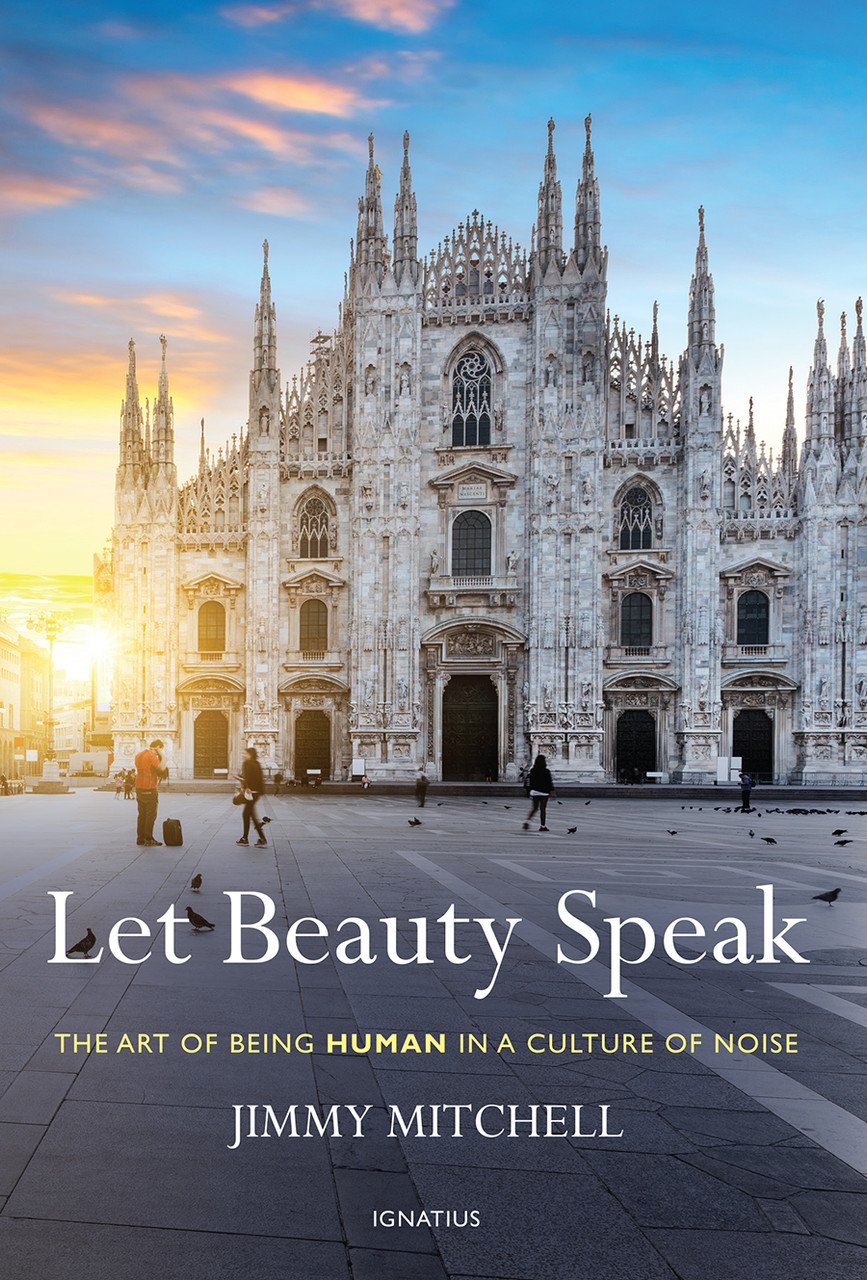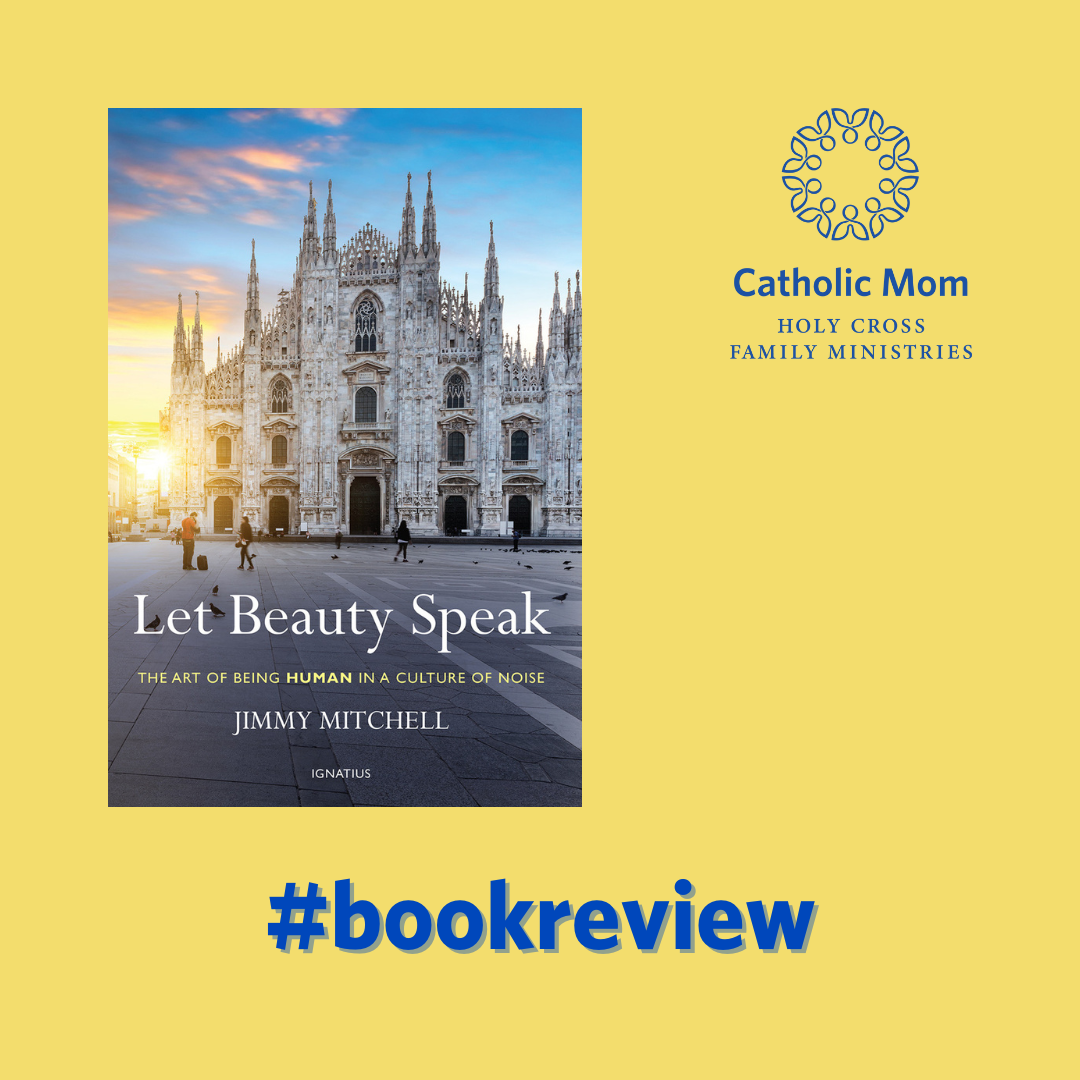
Sarah Pedrozo reviews Let Beauty Speak: The Art of Being Human in a Culture of Noise, a new release from Ignatius Press.
We live in an incessantly noisy world. Different types of noise surrounded us constantly, from the visual noise seen scrolling through social media to the auditory noise heard in traffic and on screens, not to mention that constant companion: mental noise, the internal chatter we hear in our heads reminding us of our long list of to-dos, keeping us awake at night.
With so many cries for our attention, how is it possible to hear the still, small voice of God in our everyday lives? Author and speaker Jimmy Mitchell proposes there is a way, by letting Beauty speak to us. In his new book Let Beauty Speak: The Art of Being Human in a Culture of Noise, recently released by Ignatius Press, Mitchell writes:
Beauty points to the divine. Every encounter with beauty is a foretaste of heaven.”

When we think of beauty, we might think of a magnificent sunset, a symphony by Mozart, or a painting by Michelangelo. All these things do indeed present us with images of beauty, but Mitchell believes there is something even more beautiful that can speak to us more clearly, namely the lives of those who “fixed their gaze constantly upon the Beautiful One, who gave them their identity every day in prayer.” In reflecting on the lives of the saints, “those who surrendered constantly to Divine Providence and allowed God to orchestrate their lives into a beautiful masterpiece,” we can also find the path to God through the Way of Beauty. As inspiring and uplifting as nature, great music and art can be, they are not as powerful as the lives of those whose very words and actions were beautiful.
In his book, Mitchell proposes 10 principles for imitating the beauty lived out in the lives of the saints. These principles include elements like Culture, Suffering, Leisure, Work, Friendship, and Community. Each of the 10 principles begins with a retelling of a personal story from Mitchell’s life, in which he encountered the idea he is writing about.
At the beginning of my favorite chapter, in which Mitchell talks about the principle of Wonder, he starts off by describing his trip to New Zealand. He shares some of the adventures he had there as well as the people he met, all as ways through which he was able to experience Wonder. Although we don’t need to travel to a different hemisphere to experience Wonder, this trip helped him to become aware of the need to respond in Wonder and Awe to the beauty in everyday life. He was able to continue noticing the need for Wonder when he returned home.
Each chapter contains plenty of quotes from trusted thinkers and leaders, as well as many questions to help guide the reader into a better understanding of each principle and how to recognize it and live it. Each chapter ends with two sections, called “Getting Practical” and “Further Reading.” As you might guess, the “Getting Practical” section contains several ideas of practical, simple ways to practice the principle. For example, some suggestions in the “Getting Practical” section in the chapter on Suffering include:
- Say “Blessed be God” every time you are tempted to complain.
- Unite your trials and sufferings with Our Lord on the cross. Ask the Holy Spirit to help you find the seeds of the resurrection amid the suffering.
- Commit to self-denial every day, even if that is as small as skipping dessert.
- Reach out to those who you know are suffering and be with them.
The “Further Reading” sections give several solid resources to readers who want to explore a specific principle further. Mitchell explains that since his book is designed to be an introduction to the 10 principles of beauty especially lived in the lives of the saints, he points to many other writers and thinkers to help the reader continue to grow in a certain principle. He lists specific books and encyclicals connected to each principle, for further spiritual growth.
Let Beauty Speak: The Art of Being Human is about 180 pages in length and is an easy, enjoyable read. It is available for less than twenty dollars and is suitable for high schoolers. Even some advanced middle schoolers could benefit from reading it. It would also make a great starting point for any adult who would like an introduction to the 10 principles and provides a wealth of wonderful resources for going further. Above all, this book reminds us:
All the great transformations in life begin with letting beauty speak, so that it can draw us into a posture of openness and receptivity.
I hope you will Let Beauty Speak to you!
Ask for Let Beauty Speak at your local Catholic bookseller, or order online from Amazon.com or the publisher, Ignatius Press.

Copyright 2023 Sarah Pedrozo
Images: Canva
This article contains Amazon affiliate links, which provide a small compensation to the author of this piece when purchases are made through the links, at no cost to you. Thank you for supporting our Catholic Mom writers in this way.
About the Author

Sarah Pedrozo
Sarah Pedrozo has worked in family faith formation for the past 15 years, helping families learn and live their Catholic faith. With master's degrees in theology and English, she especially likes using stories to catechize. Sarah blogs at BasketsAndBlessings.com, in between working and taking care of her family. She loves bluebonnets, her rescue dogs and the Texas Hill Country.


.png?width=1806&height=731&name=CatholicMom_hcfm_logo1_pos_871c_2728c%20(002).png)
Comments